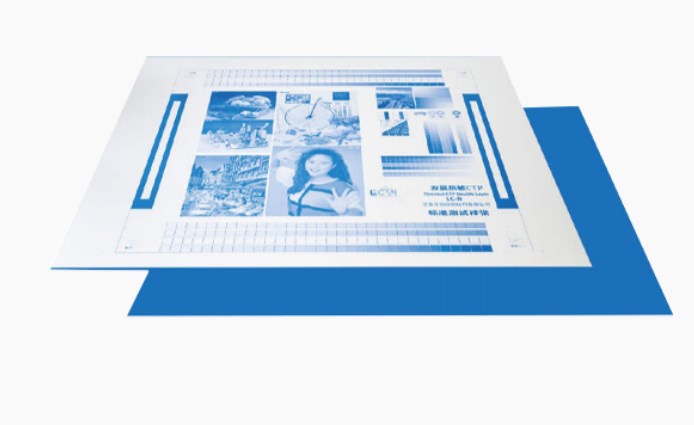2025-11-15
With the rapid development of the printing industry, traditional plate-making methods are being replaced by more efficient, environmentally friendly, and precise technologies. Among these, CTP plates, as a revolutionary tool in printing plate-making, are becoming key equipment for printing companies to improve efficiency and quality. They not only change the printing process but also have a profound impact on cost control, production speed, and environmental protection in the printing industry.
CTP Plate Technology and Workflow
The core of CTP plates lies in directly transferring digital images onto the printing plate, eliminating the cumbersome process of traditional film plate-making. Traditional plate-making methods require outputting film first, followed by exposure and development processes to complete the plate production. CTP technology, however, directly transfers the design from the computer to the printing plate surface using lasers or photosensitive materials, achieving a seamless connection from digital files to the printing plate.
In practice, the CTP plate-making process relies on the combination of a high-precision laser system and a photosensitive coating material. The laser beam precisely forms a printable area on the printing plate surface based on the brightness variations of the image. After development, the printing plate can be directly used on the printing press for printing operations. This technology not only reduces manual operation but also significantly reduces plate-making error rates, ensuring high fidelity of the printed product.
Advantages of CTP Plates in Print Quality
In the printing industry, quality has always been the core of a company's competitiveness. Using CTP plates, printing companies can achieve extremely high image resolution and detail. The fineness of its surface image can meet the needs of commercial printing, packaging printing, and even high-end art printing. CTP plate making reduces optical errors and human deviations in traditional processes, achieving unprecedented levels of color reproduction and printing registration accuracy.

CTP plates also perform exceptionally well in repetitive printing. Because each printing plate is generated directly from a digital file, it avoids the accumulation of errors caused by multiple film reproductions. Whether it's mass production or small-batch, multi-variety printing tasks, CTP plates ensure the consistency and stability of printed products.
Dual Improvement in Environmental Protection and Economic Benefits
CTP plate technology not only focuses on print quality but also places higher demands on environmental protection and economic benefits. Traditional plate making requires the use of large amounts of chemical agents for development, washing, and wastewater treatment, resulting in significant environmental pollution problems. The emergence of CTP plates has significantly reduced the use of chemical reagents and lowered wastewater emissions, achieving the goal of green printing.
From an economic perspective, CTP plates shorten plate-making cycles, reducing material waste and labor costs. Companies no longer need to perform cumbersome film processing, greatly improving the efficiency of each plate-making process and making the production flow more compact and efficient. This not only enhances the company's production capacity but also strengthens its market competitiveness, becoming an important tool for modern printing companies pursuing refined and high-efficiency production.
The Role of CTP Plates in the Integration of Digital and Traditional Printing
Against the backdrop of the rapid development of digital printing, CTP plates also demonstrate unique advantages. They can seamlessly interface with digital printing equipment, directly converting digital images into printing plates while simultaneously meeting the high-quality output requirements of traditional offset printing. Through CTP technology, printing companies can flexibly switch production modes to meet the comprehensive requirements of different printing projects in terms of speed, cost, and quality.
CTP plates are widely used in packaging printing, magazine printing, and commercial printing, providing companies with high-precision and high-efficiency plate-making solutions. Especially in printing projects demanding high-precision colors and complex patterns, CTP plates ensure that every print achieves the desired effect, providing customers with reliable print quality assurance.
Technological Innovation Drives the Continuous Development of CTP Plates
With the continuous advancement of materials science, laser technology, and computer control technology, the performance of CTP plates is constantly improving. New photosensitive materials, wear-resistant and scratch-resistant coatings, and high-precision laser control systems enable faster plate-making speeds and longer lifespans, while further enhancing printing accuracy. In the future, CTP plates will become more intelligent, deeply integrated with printing management systems to achieve data-driven control of the entire production process, providing printing companies with more efficient and sustainable production solutions.
CTP plates have become an indispensable core technology in the modern printing industry. With their digital, environmentally friendly, efficient, and high-precision characteristics, they have completely transformed the traditional printing plate-making model. For printing companies pursuing high-quality, low-cost, and green production, CTP plates are not only a powerful tool for technological upgrades but also a key to enhancing market competitiveness. With continuous technological innovation and widespread application, CTP plates will undoubtedly play an increasingly important role in the global printing industry, bringing new development opportunities to the printing sector.